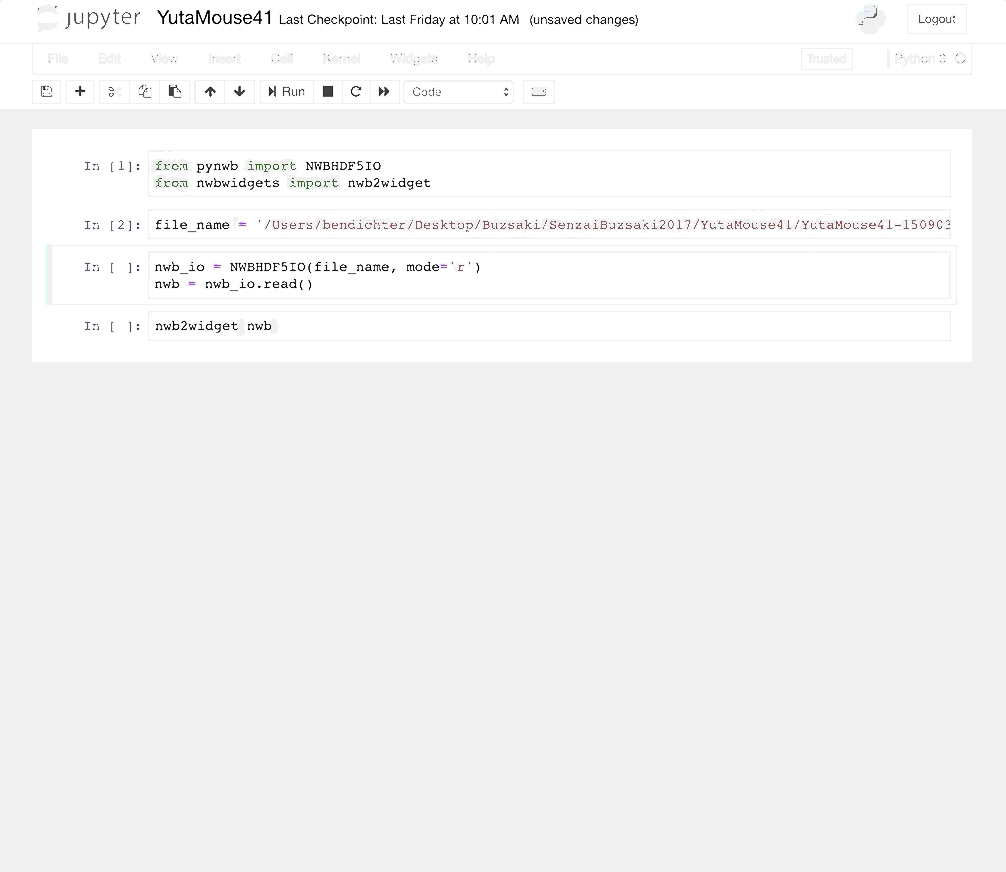NWB Widgets
NWB Widgets is a library of widgets for visualization NWB data in a Jupyter notebook (or lab). The widgets make it easy to navigate through the hierarchical structure of the NWB file and visualize specific data elements. It is designed to work out-of-the-box with NWB 2.0 files and to be easy to extend. Source Docs

Demo

Installation
pip install nwbwidgets
Usage
from pynwb import NWBHDF5IO
from nwbwidgets import nwb2widget
io = NWBHDF5IO('path/to/file.nwb', mode='r')
nwb = io.read()
nwb2widget(nwb)
How it works
All visualizations are controlled by the dictionary neurodata_vis_spec. The keys of this dictionary are pynwb neurodata types, and the values are functions that take as input that neurodata_type and output a visualization. The visualizations may be of type Widget or matplotlib.Figure. When you enter a neurodata_type instance into nwb2widget, it searches the neurodata_vis_spec for that instance’s neurodata_type, progressing backwards through the parent classes of the neurodata_type to find the most specific neurodata_type in neurodata_vis_spec. Some of these types are containers for other types, and create accordian UI elements for its contents, which are then passed into the neurodata_vis_spec and rendered accordingly.
Instead of supplying a function for the value of the neurodata_vis_spec dict, you may provide a dict or OrderedDict with string keys and function values. In this case, a tab structure is rendered, with each of the key/value pairs as an individual tab. All accordian and tab structures are rendered lazily- they are only called with that tab is selected. As a result, you can provide may tabs for a single data type without a worry. They will only be run if they are selected.
Extending
To extend NWBWidgets, all you need to a function that takes as input an instance of a specific neurodata_type class, and outputs a matplotlib figure or a jupyter widget.